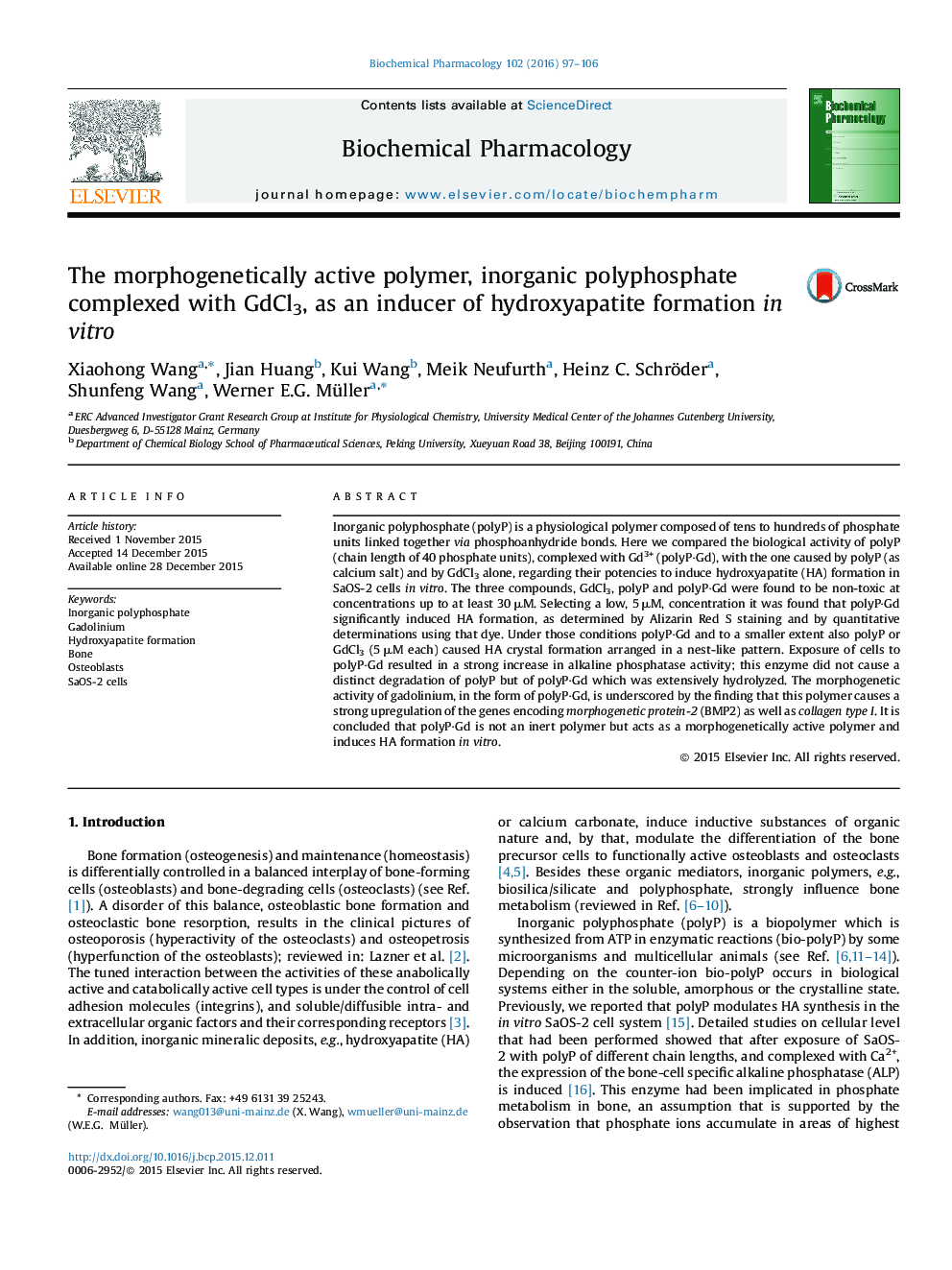| Article ID | Journal | Published Year | Pages | File Type |
|---|---|---|---|---|
| 2511833 | Biochemical Pharmacology | 2016 | 10 Pages |
Inorganic polyphosphate (polyP) is a physiological polymer composed of tens to hundreds of phosphate units linked together via phosphoanhydride bonds. Here we compared the biological activity of polyP (chain length of 40 phosphate units), complexed with Gd3+ (polyP·Gd), with the one caused by polyP (as calcium salt) and by GdCl3 alone, regarding their potencies to induce hydroxyapatite (HA) formation in SaOS-2 cells in vitro. The three compounds, GdCl3, polyP and polyP·Gd were found to be non-toxic at concentrations up to at least 30 μM. Selecting a low, 5 μM, concentration it was found that polyP·Gd significantly induced HA formation, as determined by Alizarin Red S staining and by quantitative determinations using that dye. Under those conditions polyP·Gd and to a smaller extent also polyP or GdCl3 (5 μM each) caused HA crystal formation arranged in a nest-like pattern. Exposure of cells to polyP·Gd resulted in a strong increase in alkaline phosphatase activity; this enzyme did not cause a distinct degradation of polyP but of polyP·Gd which was extensively hydrolyzed. The morphogenetic activity of gadolinium, in the form of polyP·Gd, is underscored by the finding that this polymer causes a strong upregulation of the genes encoding morphogenetic protein-2 (BMP2) as well as collagen type I. It is concluded that polyP·Gd is not an inert polymer but acts as a morphogenetically active polymer and induces HA formation in vitro.
Graphical abstractFigure optionsDownload full-size imageDownload as PowerPoint slide
